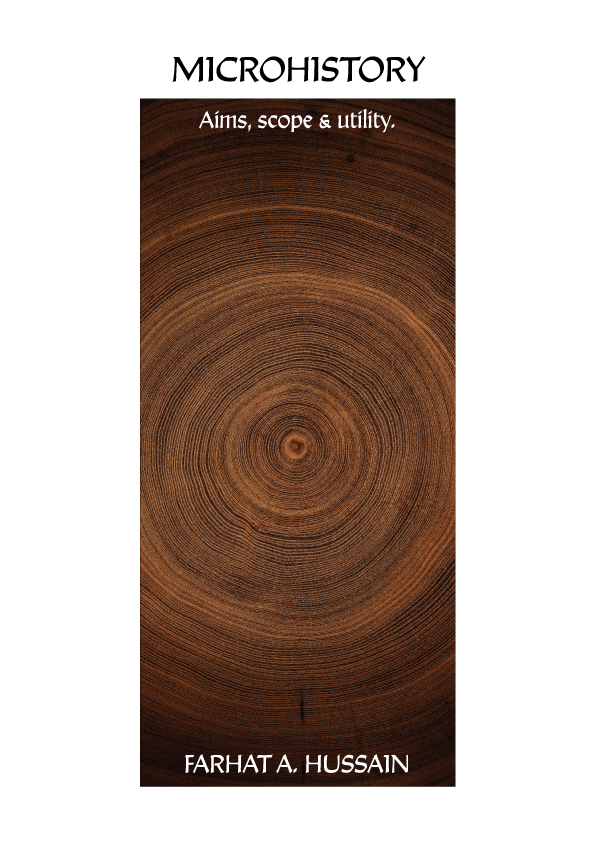
Microhistory
Farhat A. Hussain
ISBN: 978-1-0686653-8-7 (pbk)
Size: 297 mm x 210 mm
Profile: Portrait
Format: Paperback
Other formats: To be announced
Pagination: 40 pp
c. 15,000 words excluding preface and bibliography
Price: UK £4.99. Other countries: To be announced
Date of publication: 10.10.2025
Since the 1970s, microhistory has gradually gained acceptance as a useful tool for detailed study and reconstitution of history that is absent in broader historical studies. Microhistorians have developed various approaches. Consequently, it is argued (Peltonen, 2001) that the nature of microhistory is not altogether clear. Hudson (1999) advocated concentration ‘upon the processes and variety of lived experience and the enlarged understanding of material life to be gained from micro-studies’ in seeking to ensure the relevance of history. Imagination in addressing gaps in sources characterises microhistory, yet also underpins some criticism of this approach. Set against the broader backdrop of the development of knowledge and historiography, this work explores the strengths, limitations and challenges in using microhistory. Following a critical study of debates concerning its characteristics, examples of celebrated and lesser-known microhistory studies are examined, including those about Terling, biographies, medical and global history and non-Western scholarship that is often neglected in the debate of microhistory. This ‘pathology’ of the subject explores and examines approaches, directions, divergence, including by Annalistes, tensions and challenges, including calls for reform and postmodernism, in examining the contribution of microhistory to history. Although Vivo (2010) noted the persistent debate concerning microhistory, his claim that its contribution has radically changed the way we write history over the past two decades may be questioned. In exploring these and other pertinent issues and evaluating recent literature in this field, this publication considers the continued relevance of microhistory. Further depth and contemporary perspectives are generated via a unique survey of university historians. Contribution is made to critical engagement with sources, scale and methodology in historical studies and historiography.